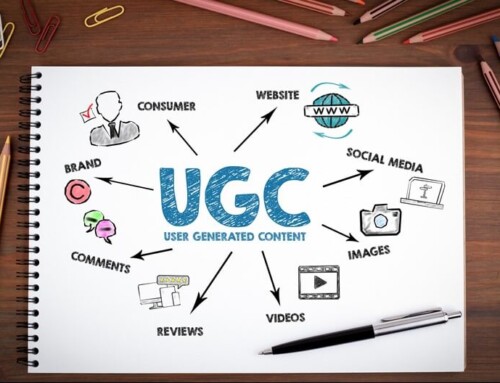Cutting through all the noise in today’s business world is challenging. This is particularly true for people in positions of power, who tend to get more phone calls, emails, instant messages, and meeting invitations than anyone else. In addition, communication styles differ from one person to another, which can confuse those who do not understand what you are trying to say.
So, how do you effectively communicate in the workplace despite all the noise and differing communication styles?
From presenting ideas at an executive meeting to making a sales pitch, business professionals use the Minto Pyramid Principle as an operative tool to communicate their points clearly and convincingly.
HOW DOES THE MINTO PYRAMID PRINCIPLE WORK?
Named after its creator, Barbara Minto, the Minto Pyramid Principle is a critical thinking tool she developed to help organize the user’s thoughts to make messages stronger, more engaging, and more precise.
Minto observed problems with communication firsthand during her travels around Europe for work. Hired by McKinsey & Company, she trained overseas consultants to deliver presentations in English. While doing so, Minto discovered that a lack of logical order in their thinking – not mastering the English language – was the main reason European consultants ran into problems giving presentations.
Based on this discovery, Minto was inspired to create her pyramid principle as a solution for the consultants. Little did she know then that thousands would eventually embrace it as a tool for themselves.
The Minto Pyramid Principle operates on “answer-first communication,” which is also called “Bottom Line Up Front.” This approach entails presenting the overall argument, finding, or suggestion/solution at the outset of business communications.
The principle is divided into three pyramid sections:
- The top of the pyramid follows the “answer-first communication” practice to highlight the main message upfront, which makes your messaging more persuasive and ensures your audience gets important details immediately. Minto encourages those using the pyramid principle to break up the bottom-line argument into a four-part story structure with the following components:
- Situation – Establish your audience and set the story’s scene.
- Complication – Explain the dilemma at hand, which you will solve with your bottom line.
- Question – Ask your audience how they can resolve the complication facing the company.
- Answer – Present your argument as the solution.
- Sharing key takeaways that support your message’s basis and summarize why you reached the conclusion, explaining the reasons clearly yet succinctly.
- The final section, at the base of the pyramid structure, should be rich in content to support your work. This involves sharing the research you have done to reinforce your argument further.
Source: (1)
Now that you know the basics of the Minto Pyramid Principle, you can apply it to different workplace scenarios.
CAPTURE YOUR AUDIENCE’S INTEREST AND KEEP THEM ENGAGED
When you give your audience the conclusion or solution upfront, you capture their interest from the get-go. After all, what part of the conversation would interest you most? Using the “answer-first communication” practice will also pleasantly surprise your audience, as they are probably accustomed to the goods being withheld until the end.
Following the conclusion or solution with key takeaways keeps your audience engaged because you are now elaborating on it by discussing why it is realistic. Finishing the presentation with concrete evidence shows that your points are legitimate and you take your responsibility for the endeavor seriously.
By cutting out the fat and serving them the meat, you keep your audience engaged throughout the entire presentation.
MAKE MORE CONVINCING PERSUASIVE ARGUMENTS
Whether you are closing sales or submitting a budget for approval, you must be persuasive enough to convince your audience of the benefits of your pitch.
When you lead with the conclusion – for example, X product will solve Y problem – you give yourself an advantage. Instead of listing the problem first, which your audience is already well aware of, you are presenting solutions for them. This approach makes your argument stronger right off the bat. Fortifying your statement further, you bolster your proposed solution with logical reasons why it will solve their problem. You are giving them the whys behind the what. Supporting it all with hardcore evidence like data and case studies demonstrates the validity of the proposed solution as an effective one.
As you can see, the Minto Pyramid Principal gives you everything you need to successfully close a sale, pitch an idea, or get a budget approved.
COMMUNICATE CLEARLY DESPITE DIFFERENT LEARNING STYLES
Each person has their way of learning and communicating. When you combine these differences with unclear messages, it is natural that confusion and misunderstandings tend to arise. Therefore, communicating in a way everyone can understand is essential in the workplace.
Using the Minto Pyramid Principle helps in this area, as well. Since it is heavily structured and rooted in logic, this approach aids in clarifying messages for the audience, regardless of how they think, learn, or communicate. The principle effectively bridges communication gaps largely because sticking to the facts leaves minimal room for misinterpretation.
TOP-DOWN APPROACH TO BETTER COMMUNICATION
When you incorporate the Minto Pyramid Principle into workplace communication, you might grow to love pyramids. Using this approach, you will significantly improve your communication skills to help you achieve your professional goals.
Do you need to improve communication at your corporate meetings? If so, contact Gavel International to see how working with a meeting planning company can help your organization accomplish this goal.
_______________________
SOURCE(S):
1 https://www.betterup.com/blog/minto-pyramid
This article was last updated on May 8, 2025
- Is Your Company’s Career Development Plan Really Working? - August 18, 2025
- Best Places to Find a Food and Drink Oasis in Scottsdale, Arizona - July 28, 2025
- 4 Tips for Preserving Company Culture and Morale While Scaling Up - June 23, 2025






